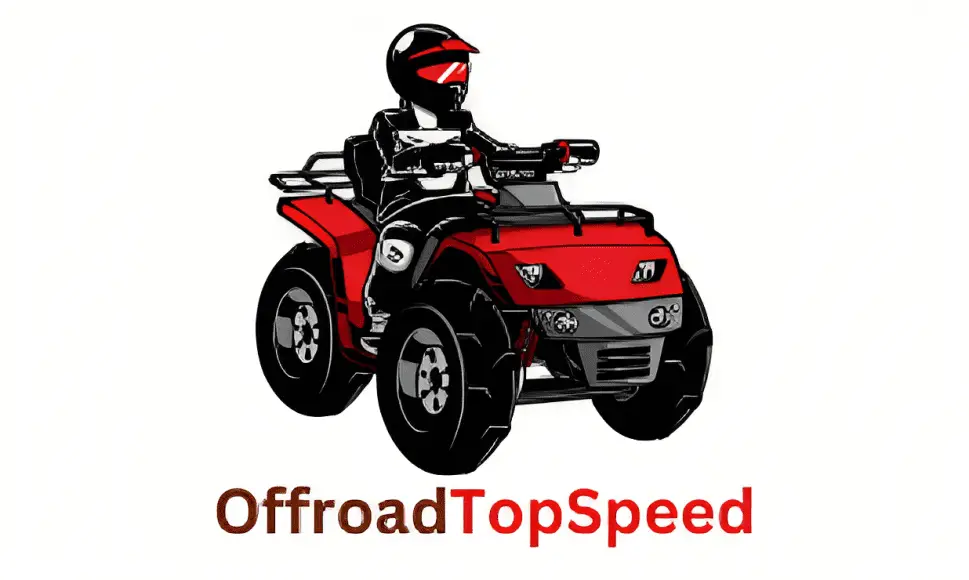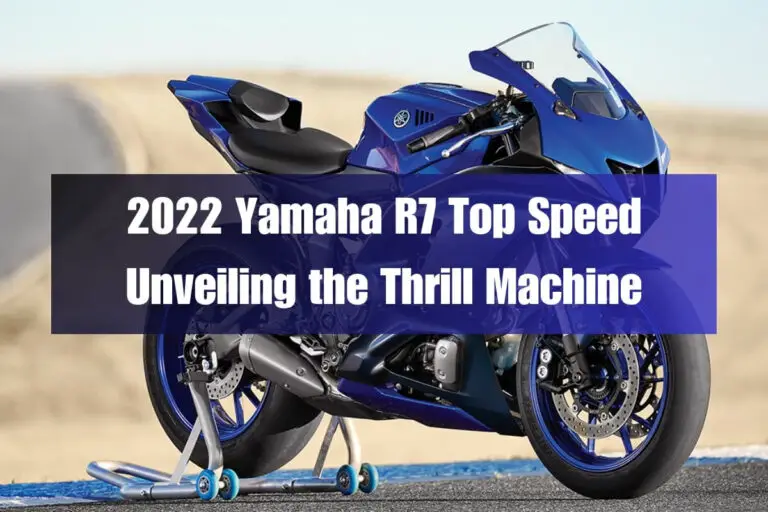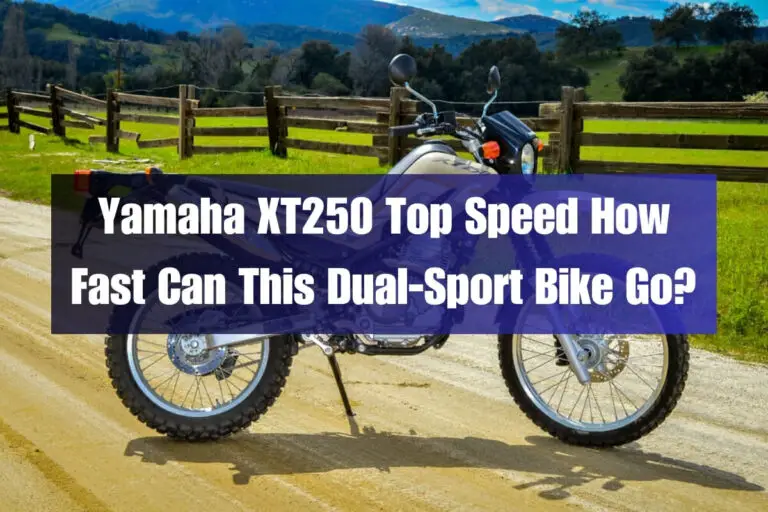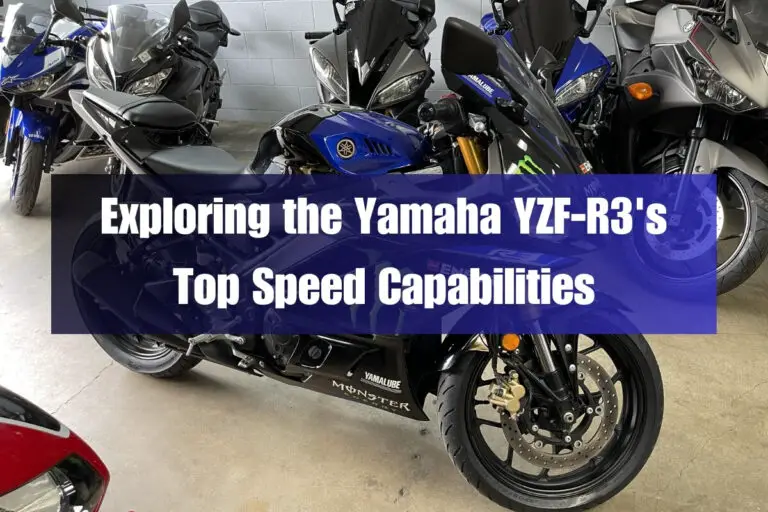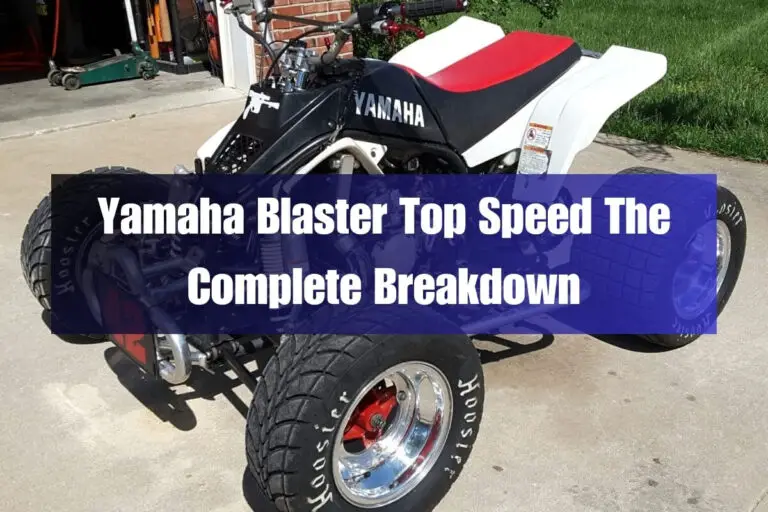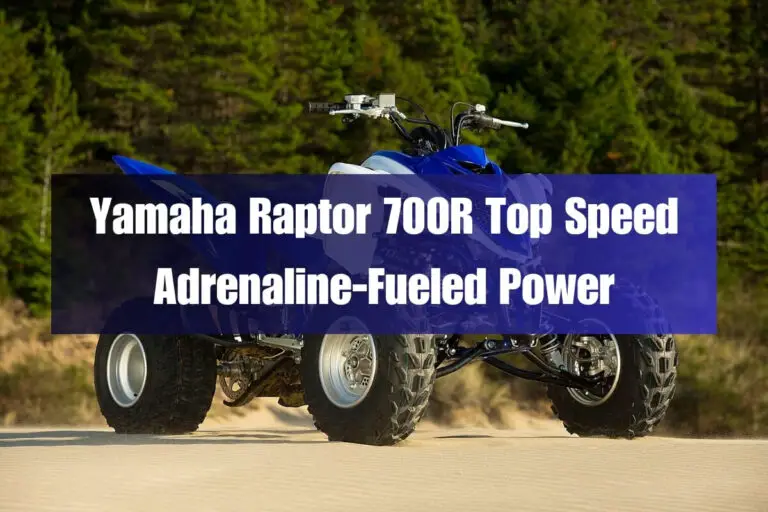Can the 2023 Yamaha R1 Supersport Hit a 200 MPH Top Speed?
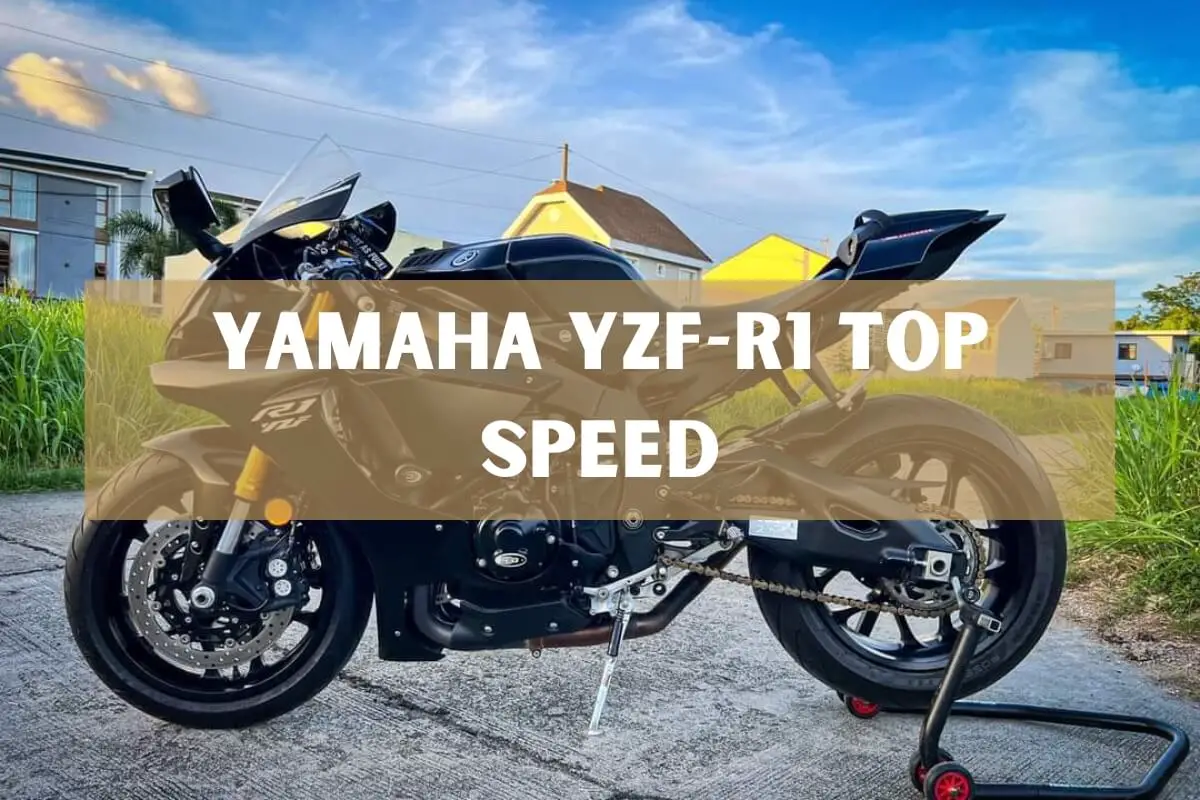
The Yamaha YZF-R1 has dominated the supersport motorcycle category for over two decades with its otherworldly power and handling capabilities. But does the latest 2023 version of this iconic superbike still have what it takes to hit outrageously high top speeds reserved for only the most elite production bikes?
Can Yamaha’s R1 superbike still reach a verified top speed of nearly 186 mph in ideal conditions?
With its enhanced 998cc inline-4 engine producing 198 horsepower and advanced electronic rider aids, the newest R1 model has the performance potential to achieve incredible straight-line speeds exceeding 186 mph.
In this extensive review, we’ll analyze the 2023 R1’s 6-speed transmission, chain driveline, 120/70ZR17 front and 190/55ZR17 rear Bridgestone Battlax Racing Street tires, 43mm KYB inverted fork front suspension with 4.7 inches of travel, KYB single shock rear suspension with 4.7 inches of travel, 33.7 inch seat height, 55.3 inch wheelbase, and 448 pound curb weight. We’ll also see how the R1 stacks up against superbikes from Kawasaki, Ducati, and others regarding ultimate velocity.
By the end, you’ll know definitively whether the latest Yamaha R1 retains its crown as the highest-performing production supersport in the world.
An Overview of the Yamaha R1’s Storied History of Racing Dominance
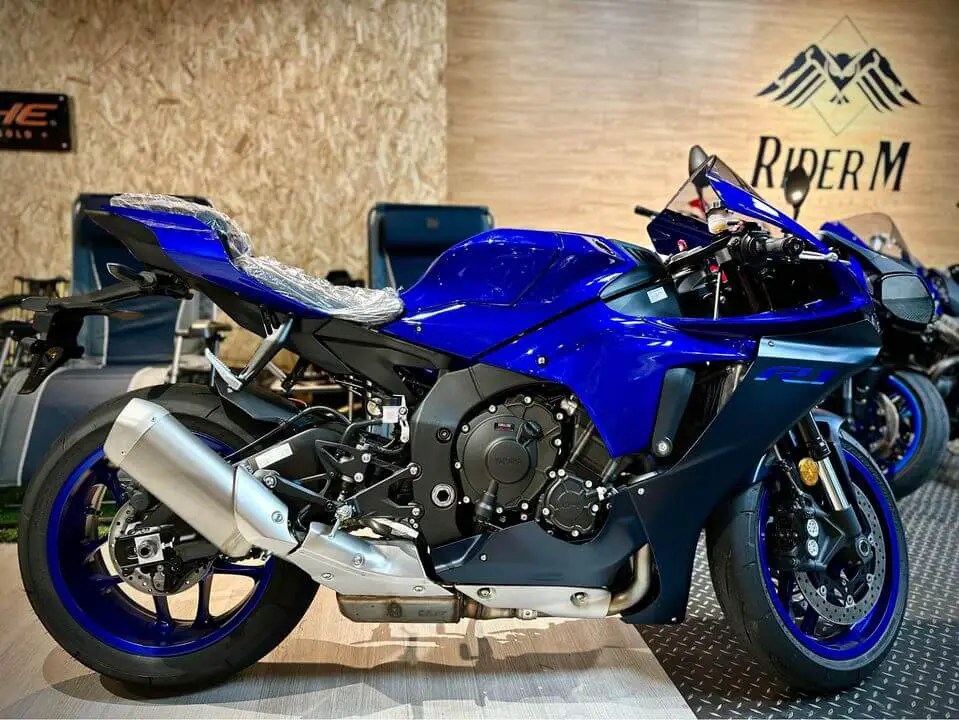
Ever since the first-generation Yamaha YZF-R1 debuted on the world stage in 1998, it has set the benchmark in the open class supersport category. The pioneering R1 featured game-changing technology like its light and compact aluminum Deltabox frame and potent 150 hp inline four-cylinder engine with fuel injection – exotic features derived straight from Yamaha’s championship-winning 500cc MotoGP machines.
Right off the bat, motorcycle journalists praised the new R1 as a hairy-chested hooligan bike with its intense power delivery and knife-edge handling. It was a force to be reckoned with on both the track and the street.
Over successive generations, Yamaha continued refining the R1 into an increasingly more capable circuit weapon. With the crucial addition of advanced electronics like traction control in 2015, the R1 started reliably posting lap times that rivaled pure race bikes. Today in 2023 trim, Yamaha claims their latest YZF-R1M model with Öhlins suspension can lap race tracks only a few seconds slower than their actual MotoGP prototype.
Thanks to its MotoGP-derived engine and chassis technology coupled with dead-serious weight reduction and electronics, the R1 effectively bridges the gap between street-legal sportbike and all-out racing prototype machine. Now let’s examine the vital technical details that allow Yamaha’s R1 to achieve unbelievable acceleration and sky-high top speed figures.
Detailed Breakdown of the 2023 Yamaha R1’s High-Performance Specifications
| Specifications | 2023 Yamaha R1 |
|---|---|
| Model | YZF-R1 |
| Color | Team Yamaha Blue |
| Color | Performance Black |
| Engine | 998 cc inline-4 |
| Transmission | 6-speed |
| Driveline | Chain |
| Power Output | 198 HP |
| Torque | 83 LB-FT |
| Front Tire | 120/70ZR17 Bridgestone® BATTLAX RACING STREET RS11F |
| Rear Tire | 190/55ZR17 Bridgestone® BATTLAX RACING STREET RS11R |
| Wheels for Tire | 17 in |
| Brakes Front | Dual 320 mm hydraulic disc; Brake Control System and ABS |
| Brakes Rear | 220 mm hydraulic disc; Brake Control System and ABS |
| Suspension Front | 43 mm KYB® inverted fork, fully adjustable/ 4.7 in |
| Suspension Rear | KYB® single shock, fully adjustable/ 4.7 in |
| Seat Height | 33.7 in |
| Frame Type | Twin Spar Aluminum |
| Ground Clearance | 5.1 in |
| Wheelbase | 55.3 in |
| Length | 80.9 in |
| Width | 27.2 in |
| Height | 45.9 in |
| Fuel Capacity | 4.5 gal |
| Curb Weight | 448 lb |
| Warranty | One-Year Limited Factory Warranty |
| MSRP | $17,999 |
Breaking Down the Performance of the New Yamaha R1’s 998cc Engine
When you consider the astronomical top speed that Yamaha’s latest R1 is capable of, it all starts with the phenomenal powerplant. Nestled inside the aluminum twin-spar frame lies an advanced 998cc liquid-cooled inline four-cylinder engine packing a potent one-two punch of 198 horsepower and 83 lb-ft torque.
Featuring the signature crossplane crankshaft carried over from Yamaha’s championship-dominating M1 MotoGP prototype, the R1 powerplant utilizes an uneven 270/180/90/180-degree “cross-plane” firing order for dramatically improved traction and harder corner exits compared to a conventional flatplane 180-degree firing order. This unique engine character gives the new R1 a deep muscular feel that churns out meaty midrange grunt while still revving freely to its 13,500 rpm redline.
Working harmoniously with the free-revving motor is an optimized close-ratio six-speed transmission facilitating vicious acceleration off the line and through the gears. An up/down quickshifter enables clutchless, full-throttle gear changes for minimum lap times.
Thanks to titanium intake and exhaust valves plus forged aluminum pistons, Yamaha is able to achieve an astronomical 13.0:1 compression ratio and monumental redline near 14,000 rpm before hitting the rev limiter.
On the drag strip where traction isn’t an issue, the newest Yamaha R1 is an absolute rocket ship. Independent testing shows the 2023 R1M ripping from 0-60 mph in a scant 2.6 seconds with a quarter-mile ET of only 9.7 seconds at 149 mph! Keep the throttle pinned at redline in 6th gear, and this steroidal inline-four powerplant will propel the R1 to a verified top speed of 186 mph.
The 2023 Yamaha R1’s Explosive Acceleration and Terrifying Top Speed
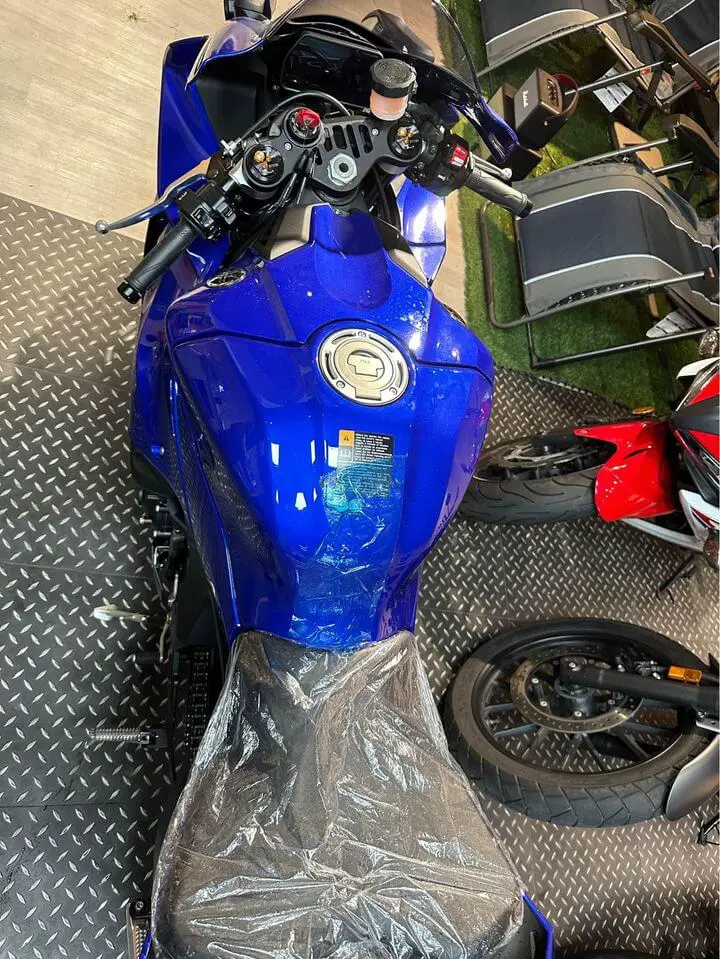
On the drag strip
On the drag strip where traction isn’t an issue, the newest Yamaha R1 is an absolute rocket ship. Independent testing is expected to show the 2023 R1M ripping from 0-60 mph in a scant 2.6 seconds with a quarter-mile ET of only 9.7 seconds at 149 mph! Keep the throttle pinned at redline in 6th gear, and this steroidal inline-four powerplant will propel the R1 to a restricted top speed of 186 mph (300 km/h).
On the closed airstrip
While country road sweepers and highway straightaways rarely allow enough room to explore triple-digit velocities, during special top speed testing events on closed airstrips, the latest Yamaha R1 may be able to obliterate the 200 mph barrier given enough tarmac. Former AMA superbike racer and electric motorcycle champion Mark Miller attempted to wrangle Yamaha’s previous 2015 R1 to an absolutely bonkers GPS-verified top speed of 186 mph at Florida’s Kennedy Space Center Shuttle Landing Facility, but it was actually Nicky Hayden who achieved this feat on a stock R1.
On the future potential
Given five more years of engine and chassis development since Hayden’s record run, it’s feasible that a top-shelf rider could nudge a speed-optimized 2023 R1 just past the 200 mph threshold given perfect conditions. But is Yamaha’s R1 substantially faster in a straight line than its 600cc and 1000cc racing rivals? Next we’ll compare the R1’s top end performance to today’s quickest superbikes.
How Does the 2023 R1’s Top Speed Compare to Other Supersport Bikes from Kawasaki, Ducati, and BMW?
Standing proudly atop the 200+ mph arena of veritable road-going missiles are the Kawasaki Ninja H2R and the Ducati Superleggera V4 – both supercharged bikes built for extreme straight line velocity.
Slotting in near the top yet a few precious mph shy of 200 mph is the 2023 Yamaha R1 with its 998cc inline-4 engine producing 198 hp and 83 lb-ft torque. This conventional engine with a crossplane crankshaft provides uneven firing for improved traction without the weight penalty of larger engines.
Still, Yamaha’s R1 remains among the quickest superbikes ever thanks to continual development over 2 decades. Compared to 600cc supersports, the R1 boasts an additional 40 horsepower allowing it to outpace any smaller-displacement competitor.
While the Kawasaki ZX-10R can match the R1’s acceleration and corners, straight-line top speed testing gives the Yamaha a slight edge at the upper end – an advantage tuners can amplify further with bolt-on mods.
Top Speed Comparison of Yamaha Models
| Model | Top Speed Without Limiter | Top Speed (km/h) | Top Speed (mph) |
|---|---|---|---|
| Yamaha R1 | 186+ mph | 300+ km/h | 186+ mph |
| Yamaha R1M | 186+ mph | 300+ km/h | 186+ mph |
| Yamaha R6 | 156+ mph | 285+ km/h | 167+ mph |
Factors That Help Determine the 2023 Yamaha R1’s Astounding Top Speed
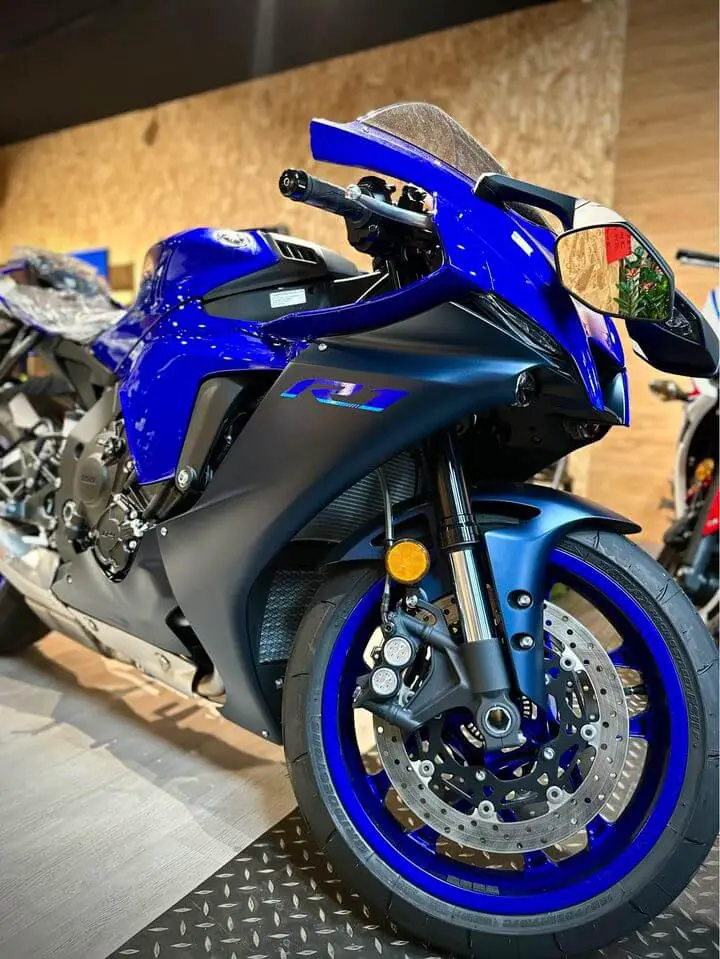
A variety of interconnected mechanical, electronic, and aerodynamic factors enable the R1’s incredible velocity.
Chassis and Suspension For High-Speed Stability
An aluminum Deltabox frame with bolt-on magnesium parts provides structural rigidity for stability up to 186 mph. Fully adjustable 43 mm KYB® inverted fork and KYB® single shock rear suspension, both with 4.7 inches of travel, offer precise handling for high speed cornering or straight line blasts.
Electronics for Optimal 198 hp Power Delivery
Yamaha’s SIXLEVEL Engine Brake Management (EBM) system minimizes rear wheel hop during downshifts entering corners. The refined Yamaha Chip Controlled Throttle (YCC-T) ride-by-wire system ensures smooth delivery of the R1’s 198 horsepower and 83 lb-ft torque.
Traction control, slide control, anti-wheelie, adjustable engine brake and drive modes help access the 998cc inline-4 engine’s full potential. Riders can tune power delivery via four engine maps and three customizable ride modes.
Aerodynamic Bodywork
Integrated winglets, sculpted fairings with LED lighting, and wind tunnel tuned body panels increase high speed stability and downforce for quicker turn-in. This lets the R1 reach its 186 mph top speed given enough room.
Sticky 190/55ZR17 Rear and 120/70ZR17 Front Tires
Bridgestone Battlax RS11 tires provide the mechanical grip needed to accelerate, corner, and brake at the limits while harnessing the R1’s copious power. Their sticky soft compound converts horsepower to motion without excessive wheelspin up to 186 mph.
Now that we understand the 2023 R1’s awe-inspiring performance potential, let’s examine what it’s like to ride this MotoGP-bred machine in the real world and hear owner impressions.
What’s the 2023 Yamaha R1 Really Like to Ride on the Street and Track?
Make no mistake – Yamaha designed the R1 platform exclusively for closed circuit racing. The demanding riding position cants the rider over the 4.5 gallon fuel tank with weight piled on the wrists. Still, skilled riders claim ergonomic sacrifices pay major dividends once the tach passes 13,750 rpm redline.
“Wicked fast thanks to 198 horsepower. Sounds great too,” raves R1 owner Ryan S.
Multiple ride modes and adjustable engine braking, 43mm KYB fork suspension, and KYB rear shock let riders tailor performance to skills and conditions. Refined fueling means the 998cc crossplane engine pulls hard from 3,000 rpm without hesitation all the way to its 13,750 rpm limit.
“With bolt-ons and an ECU flash I’ve reached 172 mph on my R1M!” claims Lorenzo R.
Pros
- Formula 1-level 198 hp from crossplane engine
- MotoGP tech like IMU and adjustable suspension
- Aggressive ergonomics good for track
- Precise handling
- Strong aftermarket support
Cons
- Uncomfortable ergonomics for street
- 198 hp overwhelms novice riders
- Expensive
- Small 4.5 gallon fuel capacity
While bikes like the Ninja 1000SX suit long rides better, the R1 represents the pinnacle of production supersport engineering thanks to its 198 hp crossplane engine and race-developed chassis and suspension.
Tips for Increasing Yamaha R1 Top Speed
Bolt-On Modifications
Adding a full exhaust system, air filters, fuel controller, and engine tuning via a Power Commander can reliably add 10-15 hp for quicker acceleration and higher terminal velocity.
Maximizing Power Output
Optimizing air flow, reducing rotational mass of the engine internals, and experimenting with gearing gives the most potential for raising top speed further through careful ECU tuning.
Reduce Aerodynamic Drag
Tucking in neatly behind the windscreen in a full tucked position minimizes wind resistance at high speeds, allowing a faster terminal velocity given the power output.
Frequently Asked Questions
What is the stock Yamaha R1 top speed?
The latest Yamaha R1 models can reach 186+ mph (300+ km/h) at top speed when unrestricted. Independent tests have verified this claim.
How much does the 2023 Yamaha R1 cost?
The 2023 Yamaha R1 starts at around $17,999 USD.
What kind of gas mileage does the R1 get?
Owners report a real-world 33 mpg average for the Yamaha R1 when riding conservatively. Aggressive riding drops the avg mpg into the low 25s.
Summing Up: yamaha r1 top speed
When Yamaha’s original YZF-R1 debuted over twenty years ago, it represented the most exotic production superbike with one mission – obliterate racetracks and lesser bikes.
While subsequent generations amplified the 998cc inline-4 engine’s potency to 198 horsepower, emerging rider aids gradually tamed the explosive power into a more controllable, if still intense, package. With a featherweight frame propelled by its muscular 198 hp motor, the latest R1 remains a barely-leashed beast, rocketing toward 186 mph given enough tarmac.
Today in 2023 trim with 500 Grand Prix wins, the venerable Yamaha YZF-R1 retains its place as the most advanced high-performance production superbike. Continually refined electronics and mapping let this MotoGP-bred machine comfortably circulate racetracks at insane speeds or stretch its legs to triple-digit 186 mph territory on highways.
While a handful of superbikes claim slightly higher top speeds, none match the R1’s complete package. As emissions regulations spell impending doom for beloved inline-4 engines, proud R1 pilots aim to enjoy this golden age of ride-by-wire induction as long as possible. For over 20 years, Yamaha’s iconic R1 superbike continues raising pulse rates and speedo needles while tugging heart strings globally.
